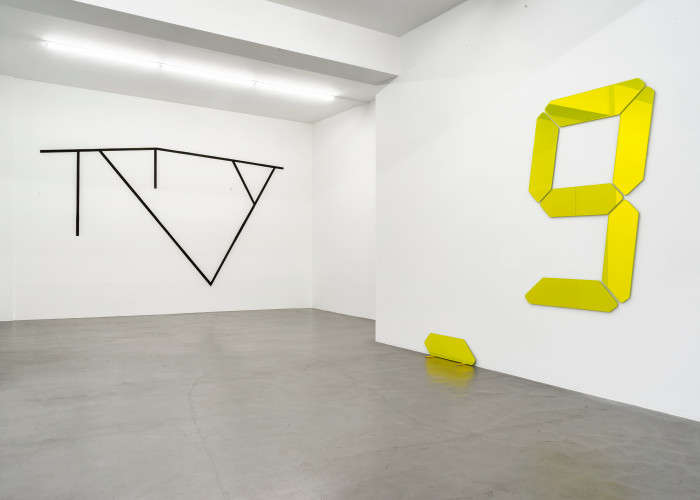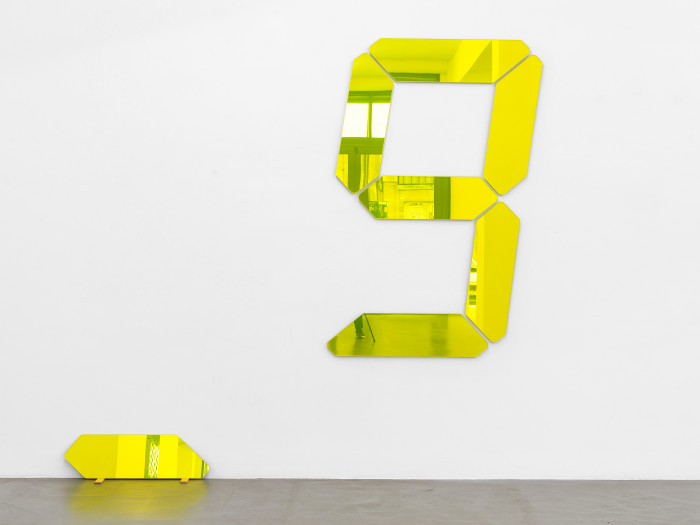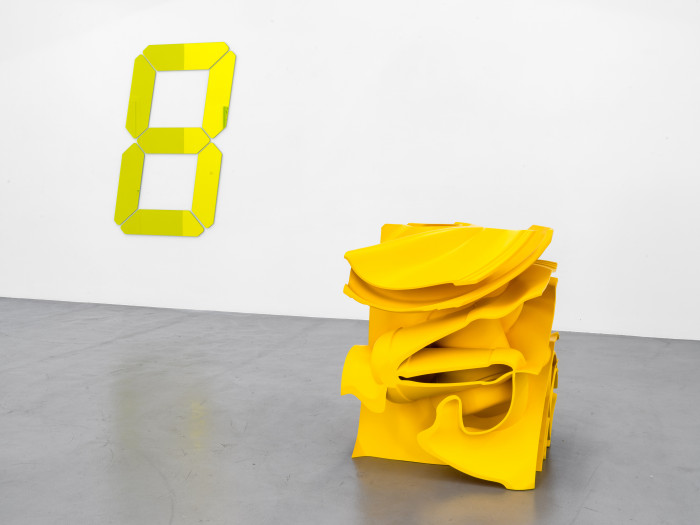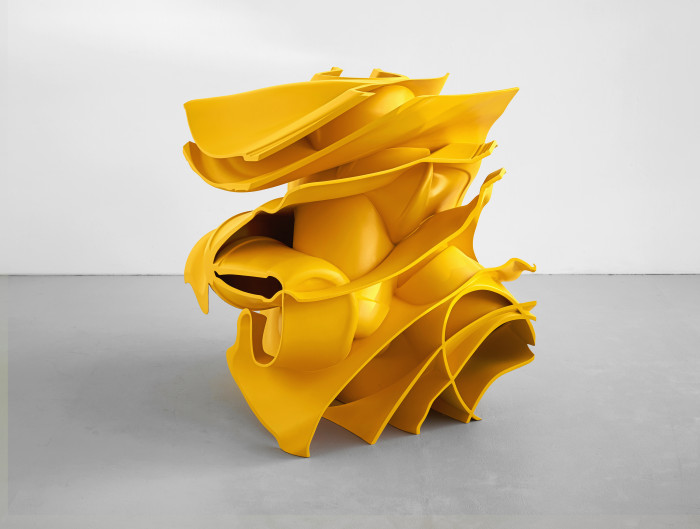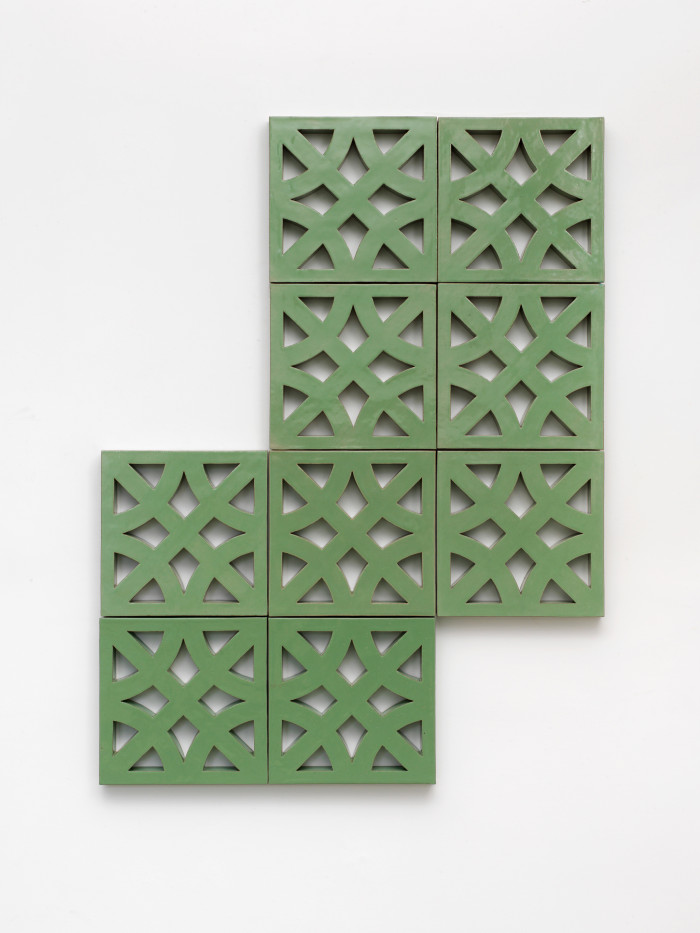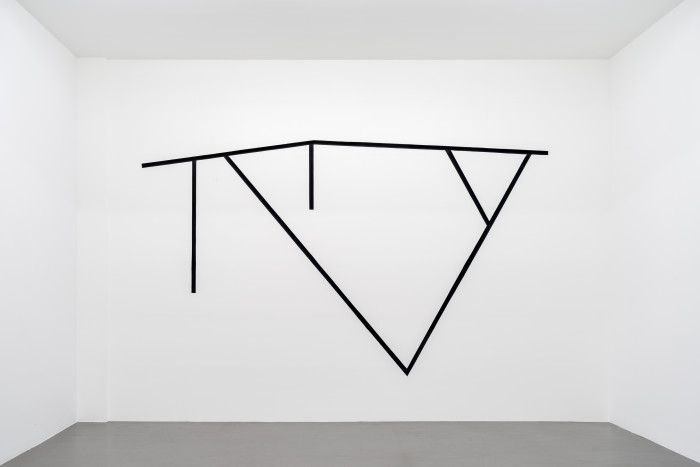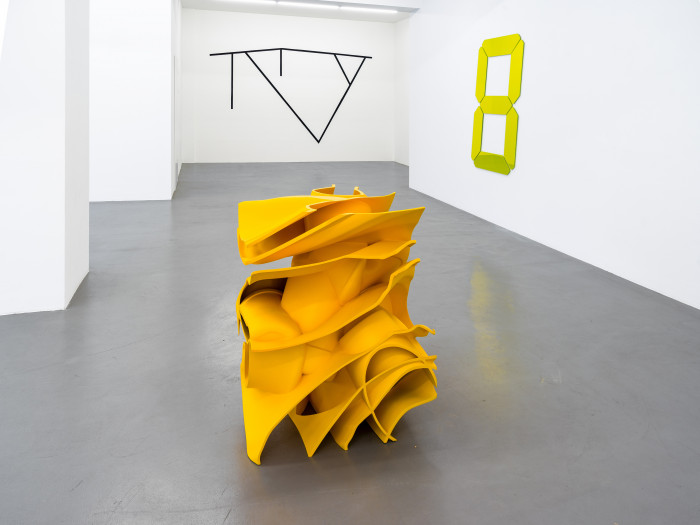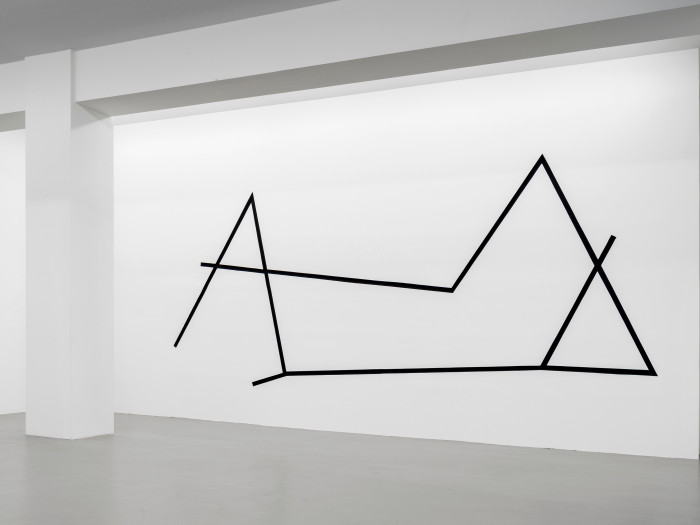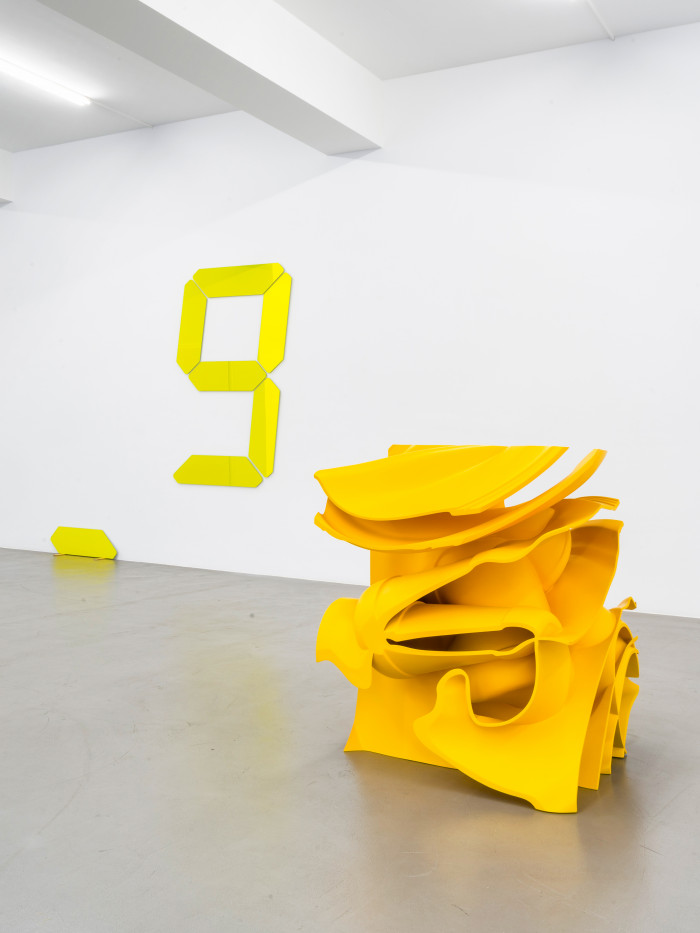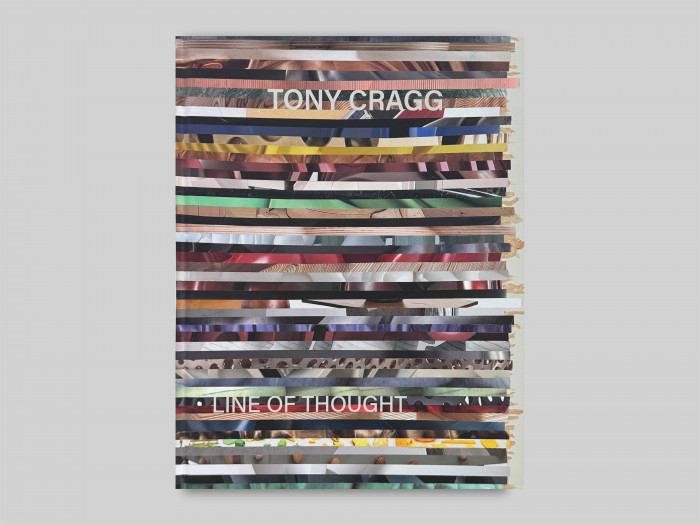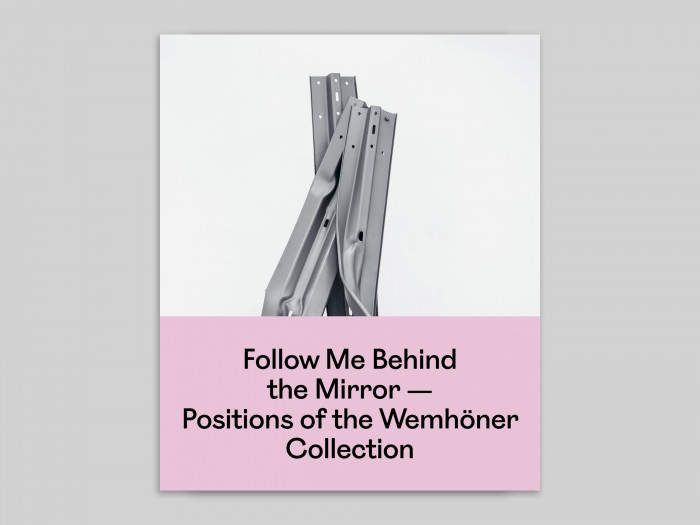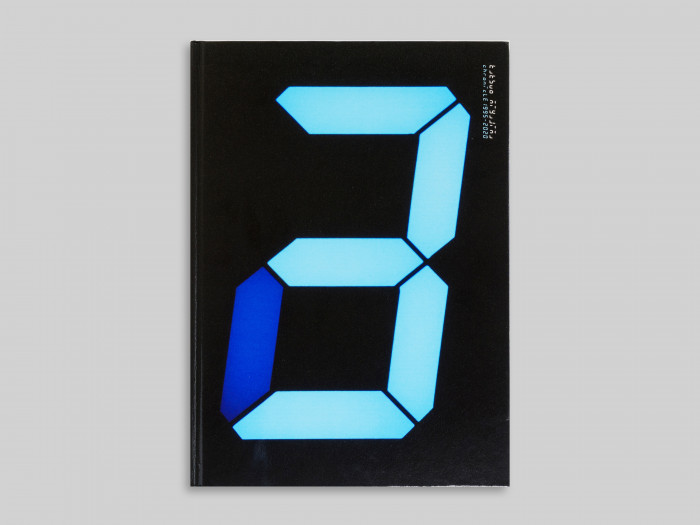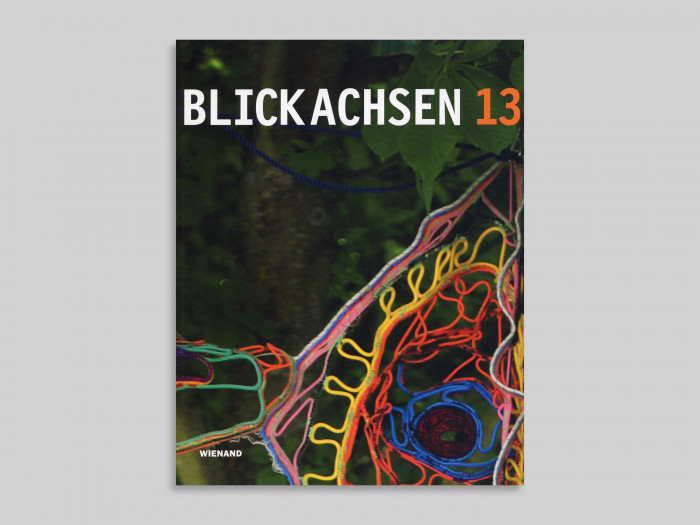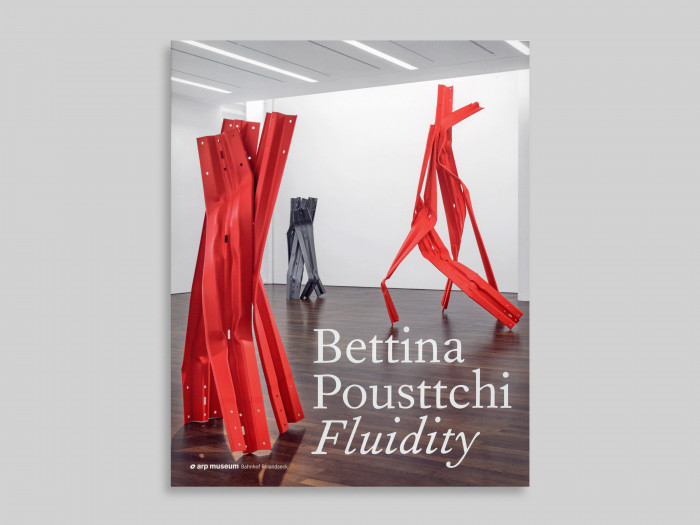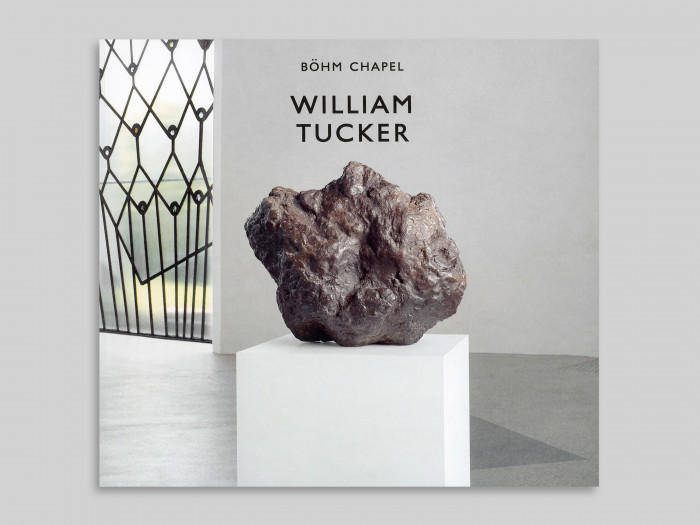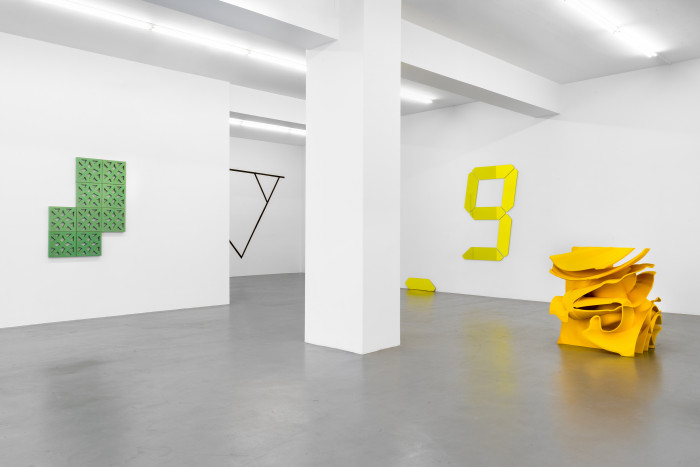
CUTOFF Tony Cragg-Tatsuo Miyajima-Bettina Pousttchi-William Tucker
The term cutoff is used in many ways and means the point at which something stops but can also be used for a spatial description, for example, when talking about a shortcut to get to a destination faster. In analytical chemistry, the cutoff is used to describe a tolerance value of drugs and medicines. It determines the point at which a test result is positive or negative. And then the term simply means that something is cut off.
Interestingly, all meanings can also be applied to sculpture and sculptural and artistic creation. Where is the point where a creative process ends, how can an artistic process be condensed or shortened and where is something added to a form, left out or cut off.
The two wall works, Cat’s Cradle IV, 2020, and Porte VI, 2020, by William Tucker, consist of deep 6 cm wide black grooves cut into the wall, forming a negative relief. The works refer to sculptures from the early 1970s that Tucker welded from metal rods. The Mural Engravings translate essential aspects of these early sculptures into a kind of shadow cast on the wall as a sculptural negative space.
The spatial counterpart to Tucker is Bettina Pousttchi’s wall relief Framework. The starting point for the work is photographs of half-timbered houses which the artist has digitally processed. Similar to a 3D print, the photo files were cut from clay and translated into a ceramic module. As an ornamental composition, a dynamic is created in the space, which Chris Dercon notes in a conversation with the artist: “I think you go much further and think about ornament not only as a form of liveliness but also as a form of animation.“ (*) Framework combines the architectural language of the European cultural space with that of the Middle East. This interweaving of perspectives is based on a transnational idea that is central to the artist’s work and can also be seen in Bettina Pousttchi’s current exhibition at the Berlinische Galerie (until 17 August). The serial, non-hierarchical arrangement of almost identical modules is reminiscent of Carl Andre or Donald Judd but also evokes a multitude of cultural, historical, and autobiographical associations.
Rich in associations is also the new wall piece Counter Object - 000 by Tatsuo Miyajima, a huge figure made of colored mirror glass. Every day a different number is randomly installed.
The mirror is highly symbolic. It makes us realize that in the appearance of reality, we only reflect ourselves. We see the laws of nature only through our current scientific models. Miyajima shows us the limitations of this system: there are only 9 digits to capture an infinite, intangible reality. What we see is only a small section of time.
Cutting out or cutting is also an essential core of the work in the yellow sculpture Parts of Life by Tony Cragg. It belongs to the central group of works Early Forms, with which the artist has been repeatedly engaged since the late 1980s and which he continues to develop. The starting point is the concatenation of different vessel forms. The intertwining of twisted and turned forms, of curves, bulges, and indentations, symbolizes the growth of life forms as a design principle of nature. Tony Cragg contrasts the bulging shapes with the radical clarity of the geometric form by cutting the sculpture into a cube. The inner structure thus exposed suddenly recalls sediment deposits in nature and creates an arc from utilitarian vessels to a mathematical understanding of nature.
(*) Chris Dercon in conversation with Bettina Pousttchi, in The City, edited by Susanne Pfleger, Städtische Galerie Wolfsburg and Jeremy Strick, Nasher Sculpture Center Dallas, Ostfildern, 2015

Tony Cragg
Born 1949 in Liverpool. Lives and works in Wuppertal, Germany.
Tatsuo Miyajima
Born 1957 in Tokyo. Lives and works in Ibaraki, Japan.
2012 - 2016 Kyoto University of Art & Design Vice President
2006 - 2016 Tohoku University of Art & Design Vice President
Bettina Pousttchi
Born 1971 in Mainz. Lives and works in Berlin.
William Tucker
Born 1935 in Cairo, Egypt
Lives and works in Massachusetts, USA

